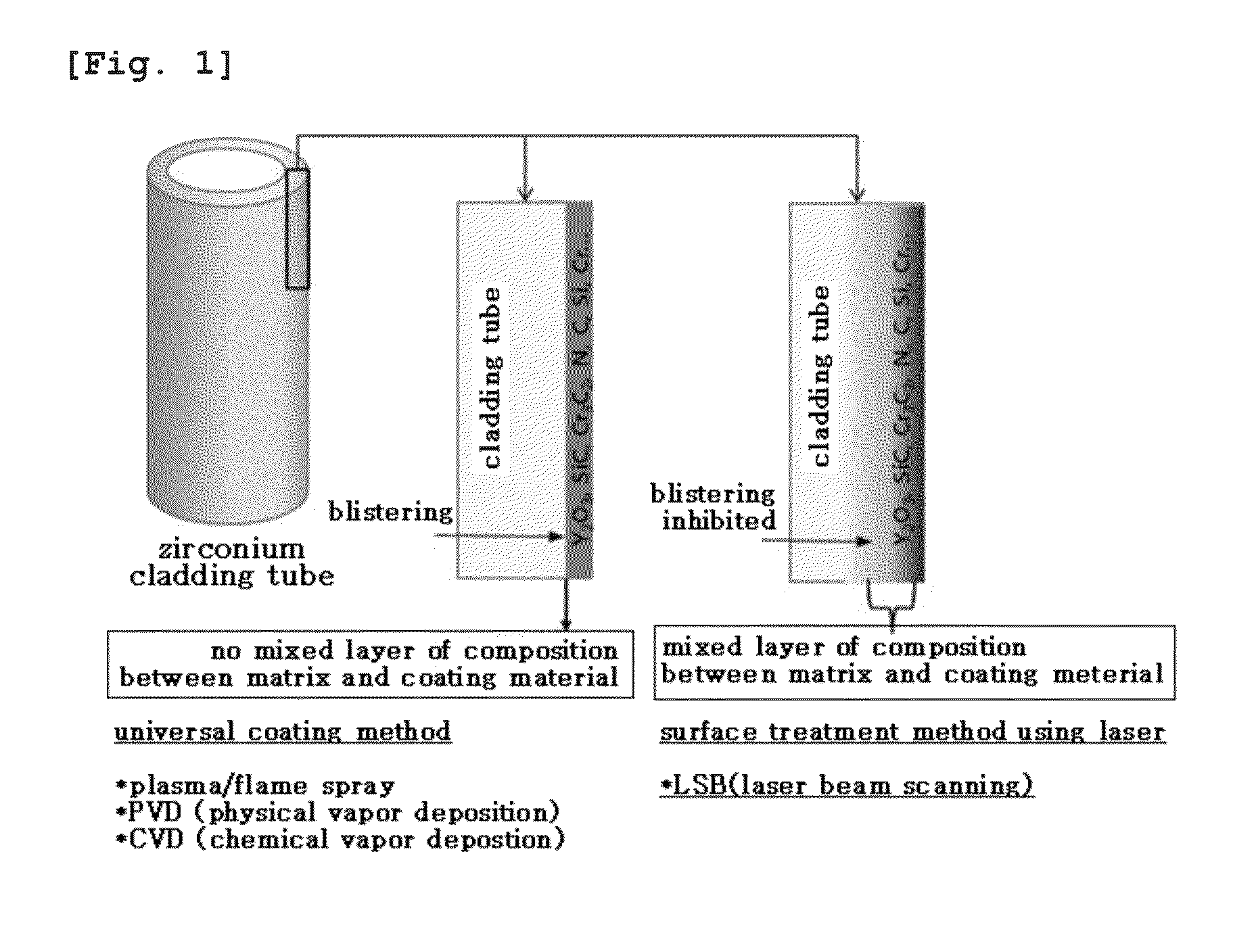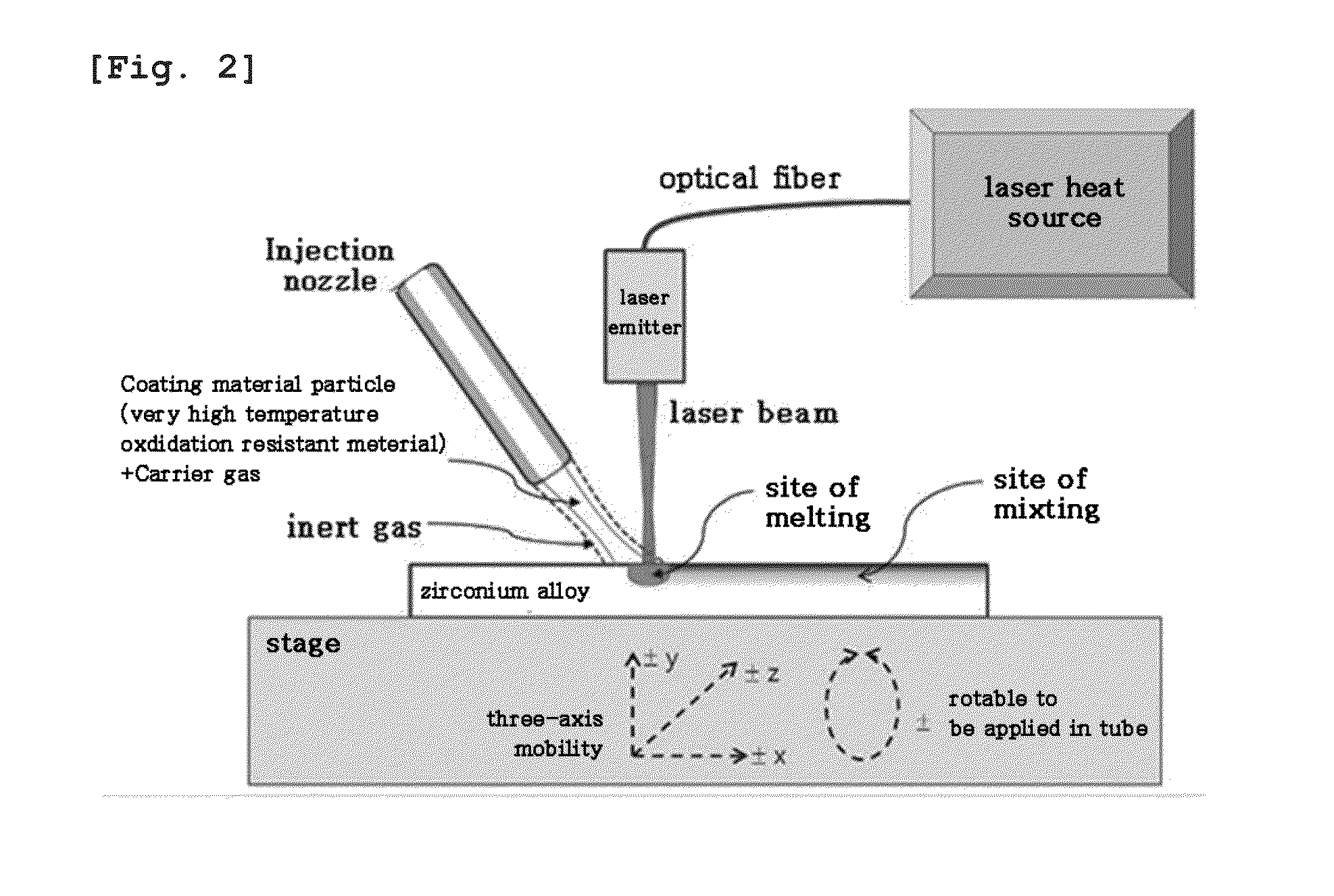Zirconium alloy with coating layer containing mixed layer formed on surface, and preparation method thereof
a technology of zirconium alloy and mixed layer, which is applied in the field of zirconium alloy with a coating layer, can solve the problems of deteriorating condition of nuclear fuel assembly, extreme amount of highly explosive hydrogen by very high corrosion rate, and currently available zirconium alloy material, which does not, and achieves excellent antioxidant properties and easy coating
- Summary
- Abstract
- Description
- Claims
- Application Information
AI Technical Summary
Benefits of technology
Problems solved by technology
Method used
Image
Examples
example 1
Zirconium Alloy with Coating Layer Containing Mixed Layer Formed on Surface—1
[0089]The zirconium alloy with a coating layer including a mixed layer on a surface was prepared using a laser with the device as illustrated in FIG. 2, in which the zirconium alloy parent material used Zircaloy-4 (Zr—98.2 wt %, Sn—1.5 wt %, Fe—0.2 wt %, Cr—0.1 w %), and the very high temperature oxidation resistant material used Y2O3. The laser output was set to 300 W, and the surface of zirconium alloy parent material was melted by irradiating laser on the surface of the Zircaloy-4 alloy parent material.
[0090]Next, the very high temperature oxidation resistant material, Y2O3, was injected along with the particle carrier gas Ar onto the site of melting on the surface of the zirconium alloy parent surface through an injection nozzle. The nozzle was a dual-tubular nozzle, in which an interior supplied the very high temperature oxidation resistant material Y2O3 and the carrier gas Ar, while an exterior suppli...
example 2
Zirconium Alloy with Coating Layer Containing Mixed Layer Formed on Surface—2
[0093]The zirconium alloy with a coating layer including a mixed layer of SiC as the very high temperature oxidation resistant material and the zirconium alloy parent material was prepared by the same method as Example 1, except for using a carbide (SiC) as the very high temperature oxidation resistant material.
example 3
Zirconium Alloy with Coating Layer Containing Mixed Layer Formed on Surface—3
[0094]The zirconium alloy with a coating layer including a mixed layer of Cr as the very high temperature oxidation resistant material and the zirconium alloy parent material was prepared by the same method as Example 1, except for using a pure metal (Cr) as the very high temperature oxidation resistant material.
PUM
| Property | Measurement | Unit |
|---|---|---|
| thickness | aaaaa | aaaaa |
| particle size | aaaaa | aaaaa |
| temperature | aaaaa | aaaaa |
Abstract
Description
Claims
Application Information
 Login to View More
Login to View More - R&D
- Intellectual Property
- Life Sciences
- Materials
- Tech Scout
- Unparalleled Data Quality
- Higher Quality Content
- 60% Fewer Hallucinations
Browse by: Latest US Patents, China's latest patents, Technical Efficacy Thesaurus, Application Domain, Technology Topic, Popular Technical Reports.
© 2025 PatSnap. All rights reserved.Legal|Privacy policy|Modern Slavery Act Transparency Statement|Sitemap|About US| Contact US: help@patsnap.com



